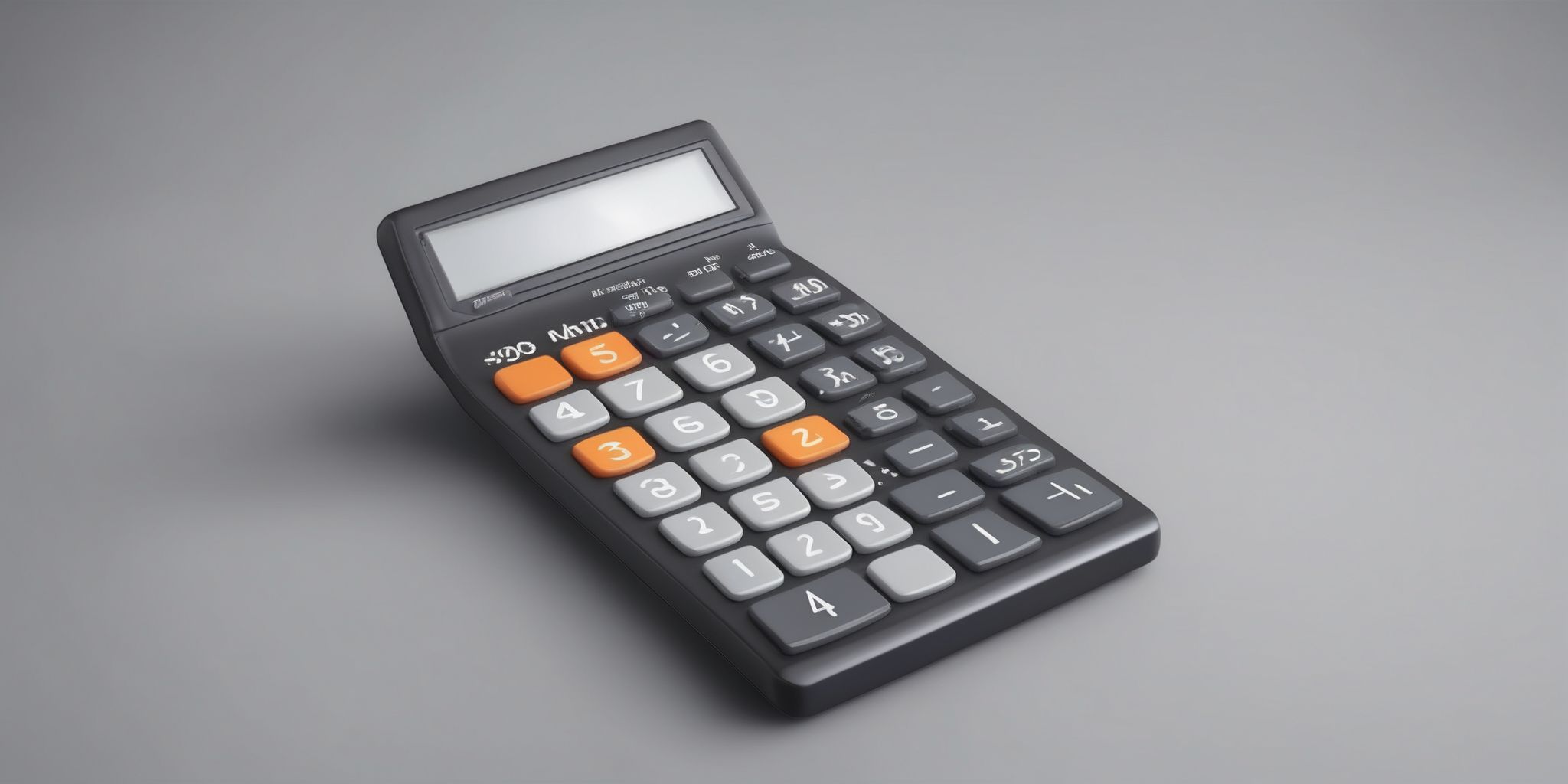Level Up Your Finances: Exploring the Gamification of Personal Finance Apps
Have you ever wondered how a simple swipe on your smartphone can transform the daunting task of managing your finances into a thrilling game? Welcome to the world of gamification, where personal finance apps have taken a playful twist. Imagine leveling up your financial literacy, earning rewards for saving, and competing against friends to reach your money goals.
In this article, we'll delve into the exciting realm of gamified personal finance apps and explore how they are revolutionizing the way we interact with our money. Get ready to embark on a financial adventure where saving and budgeting become as addictive as your favorite video game.
What is Gamification?
Gamification is the practice of applying game-like elements and mechanics to non-game contexts, such as personal finance apps. It revolves around using game principles like competition, rewards, and goal-setting to engage and motivate users. By incorporating features like progress tracking, achievements, and virtual currencies, gamified apps make managing finances more enjoyable and interactive.
For example, users can earn virtual badges or unlock levels by hitting savings targets or completing financial tasks. Gamification adds a sense of fun and achievement to personal finance, keeping users engaged and motivated to stay on top of their financial goals.
Gamification in Personal Finance Apps
Gamification in personal finance apps adds an element of fun and engagement to the process of managing money. By incorporating game-like features and mechanics, these apps encourage users to actively participate in their financial journey. Features such as goal-setting, progress tracking, and rewards create a sense of achievement and motivation.
For example, users can earn badges or unlock levels as they accomplish financial milestones. Gamification also fosters healthy financial habits by making financial tasks more enjoyable and interactive. Challenges and competitions can spur friendly competition among users, enhancing their commitment to saving and budgeting.
Benefits of Gamifying Personal Finance
Gamifying personal finance apps offers several benefits.
Firstly, it enhances engagement by making financial tasks more enjoyable and interactive. Users are more likely to stay motivated and consistently track their expenses or set savings goals.
Secondly, gamification promotes financial literacy by incorporating educational elements into the app. It can provide lessons on budgeting, investing, or debt management, empowering users with essential knowledge. Another advantage is the sense of accomplishment and progress. By achieving goals, earning virtual rewards, or attaining higher levels, users feel a sense of achievement and are more likely to continue managing their finances.
Elements of Gamification in Personal Finance Apps
Goal-setting and Progress Tracking
Goal-setting and progress tracking are fundamental aspects of gamifying personal finance apps. By setting clear and achievable goals, users can feel motivated and engaged in managing their finances. The app can provide visual representations of progress, such as progress bars or achievement badges, to give users a sense of accomplishment.
For example, users can set goals for saving a certain amount of money or reducing expenses, and the app can track their progress towards these goals. This feature allows users to track their financial improvement over time and provides a sense of satisfaction when goals are reached.
Rewards and Incentives
Rewards and incentives are a vital component of gamifying personal finance apps. By offering users tangible benefits for achieving financial goals, apps can boost motivation and engagement. These rewards could include virtual currency, badges, or even real-world discounts. For instance, users may earn points for saving money or completing financial tasks, which can be redeemed for exclusive perks or discounts on partner products.
The element of "unlocking" rewards creates a sense of accomplishment and progress, driving users to continue using the app. Effective implementation of rewards and incentives encourages positive financial behaviors and helps users stay focused on their financial goals.
Competitions and Challenges
Incorporating competitions and challenges into personal finance apps adds an element of excitement and motivation for users. Here's how these gamification elements enhance the user experience:
- Encourages goal-oriented behavior: Competitions and challenges provide users with specific targets to achieve, such as saving a certain amount or reducing expenses. This helps users stay focused and committed to their financial goals.
- Fosters healthy competition: Users can compete with friends, family, or a larger community, creating a sense of camaraderie and motivation. Friendly competition can push users to strive harder and improve their financial habits.
- Rewards and recognition: Personal finance apps often offer rewards or recognition for achievements within the competitions and challenges. This reinforces positive financial behavior and provides a sense of accomplishment.
- Learning opportunities: Competitions and challenges can also provide educational content and resources, helping users learn more about personal finance and develop better financial skills.
By incorporating competitions and challenges, personal finance apps can make the process of managing finances more engaging and enjoyable, encouraging users to level up their financial health.
Avatars and Virtual Worlds
Avatars and virtual worlds are exciting gamification elements in personal finance apps. By creating customizable avatars, users can personalize their experience and feel a stronger connection to their financial goals. Virtual worlds provide a visually appealing and interactive environment where users can navigate and explore financial concepts.
For instance, users can move through different virtual scenarios, such as a virtual city, to learn about budgeting, investing, and saving. They can interact with virtual characters who provide personalized financial advice and guidance. This immersive experience makes learning about personal finance engaging and enjoyable.
Avatars and virtual worlds add a touch of fun and creativity to the otherwise mundane task of managing finances, making it more accessible to users of all ages and backgrounds. It encourages users to actively participate and stay motivated on their financial journey.
Real-life Examples of Personal Finance Apps Gamification
Mint
Mint, a popular personal finance app, utilizes gamification techniques to engage users in managing their finances effectively. Through goal-setting and progress tracking features, Mint motivates users to achieve their financial targets. Users earn points, badges, and rewards for completing tasks such as budgeting, saving, and tracking expenses. The app also provides personalized insights and recommendations based on spending habits, helping users make informed financial decisions.
By incorporating elements of competition and challenges, Mint adds an element of fun and excitement to the process of managing money. With its user-friendly interface and interactive features, Mint demonstrates how gamification can make personal finance more engaging and accessible to a wider audience.
Acorns
Acorns is a popular personal finance app that incorporates gamification to engage users in their financial journey. It utilizes the principle of rounding up purchases and investing the spare change, making saving and investing feel effortless. Through this gamified approach, users can track their progress towards financial goals and receive rewards for reaching milestones.
The app also offers educational content and personalized investment recommendations to empower users with financial knowledge. By combining these elements, Acorns successfully motivates users to save and invest regularly while making the process enjoyable and interactive.
Qapital
Qapital, a popular personal finance app, incorporates gamification to engage users and encourage better financial habits. Through its goal-tracking feature, users can set savings targets and track their progress in real-time. The app employs behavioral economics techniques, such as nudge theory, to motivate users to save more by offering small rewards and incentives when they reach milestones.
For example, when users save a certain amount, they may unlock virtual badges or receive cash-back bonuses. This gamified approach transforms the saving experience into a fun and rewarding activity, making it easier for users to stay motivated and achieve their financial goals.
Effectiveness and User Experience
Research and Studies on Gamification in Personal Finance
Research and studies on gamification in personal finance have shown promising results. For instance, a study conducted with a group of users found that incorporating gamified elements in personal finance apps increased user engagement and motivation. Participants who used apps with progress bars and milestones were more likely to consistently track their expenses and set financial goals.
Another study revealed that using rewards and challenges in financial apps led to improved saving habits andincreased financial literacy. These findings highlight the effectiveness of gamification in encouraging positive financial behaviors and can provide valuable insights for developers looking to enhance user experience in personal finance apps.
User Feedback and Reviews
User feedback and reviews are valuable indicators of the effectiveness of gamification in personal finance apps. Users often provide insights into their experiences with the app, highlighting what features they find engaging and motivating. Positive feedback regarding goal-setting mechanisms and progress tracking suggests that these elements encourage users to stay on track with their financial goals.
On the other hand, negative feedback about unclear rewards or clunky competition structures can guide developers in making improvements. By paying attention to user feedback and reviews, developers can refine gamification strategies to enhance user experience and drive better financial outcomes for app users.
Conclusions and Future Trends
The Future of Gamification in Personal Finance Apps
The future of gamification in personal finance apps looks promising. As consumers increasingly seek engaging and interactive experiences, incorporating gamified elements will become a standard practice. By leveraging game mechanics such as challenges, achievements, and rewards, these apps can motivate users to develop better financial habits.
In the future, we can expect to see the integration of virtual reality and augmented reality, allowing users to interact with their finances in immersive and innovative ways.
Additionally, personalized and adaptive features will enable apps to tailor experiences based on individual financial goals and preferences. Embracing these advancements will offer users greater control over their financial well-being and make managing money more enjoyable.
Considerations for Developers and Users
Considerations for Developers and Users in the gamification of personal finance apps involve striking a balance between entertainment and functionality. Developers should prioritize creating engaging experiences that motivate users to consistently engage with the app. This can be achieved through well-designed challenges and rewards systems. However, it is crucial to avoid overwhelming users with excessive gamification elements that distract from the main goal of managing finances effectively.
Users, on the other hand, should be mindful of not getting carried away by the game-like aspects and focus on the long-term financial benefits. It is important to regularly evaluate the app's effectiveness in improving financial habits and adjust gamification elements accordingly.
Conclusion
Personal finance apps are increasingly incorporating gamification elements to help users better manage their money. By using game-like features such as achievement badges, challenges, and progress tracking, these apps aim to make the process of budgeting and saving more engaging and enjoyable. The article discusses how gamification can enhance financial literacy and motivation, as well as some potential drawbacks and considerations.
It highlights the positive impact of personalized feedback andthe need for careful balancing of rewards and risks.


